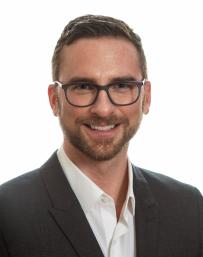Lead, PFAS, Wet Weather Management: Looking Ahead to One Water Ohio
By Joseph Danyluk

Later this month, our Jacobs water team is attending the One Water Ohio conference in Columbus, Ohio. The event is great example of OneWater in action: it’s bringing together water and wastewater professionals from across the state and the U.S. for networking and training. The organizers – the Ohio Water Environment Association and the Ohio Section of the American Water Works Association – recognize that a united approach across traditional water management boundaries is required to solve our water challenges.
As I’ve described recently, this is an effort we’ve embraced at Jacobs across our 9,000+ global water team, and so I understand first-hand how valuable OneWater collaboration can be.
The challenges that water and wastewater utilities face in Ohio – drinking water regulations like PFAS and lead, wet weather management, aging infrastructure – are shared with many other U.S. states and countries. And that’s where the OneWater focus on collaboration is so beneficial. While we recognize that each community, watershed and challenge is unique, we can nevertheless learn from one another’s experiences to develop creative solutions. Several of my Jacobs colleagues will be presenting at One Water Ohio and sharing how their work with communities in Ohio and elsewhere can help to address industry-wide challenges. Here’s a quick summary of some of our presentations:
Testing for lead in school drinking water
Lauren Wasserstrom is presenting recent research on the use of portable field analyzers as a quick method to identify elevated lead levels in drinking water at schools. Jacobs worked with a major city in Ohio to evaluate the reliability and practicality of using portable analyzers. While portable analyzers may provide simple, rapid, low-cost lead measurements compared to standard laboratory instruments, they may miss the particulate fraction of lead resulting in false assurance the water is safe. Check out Lauren’s recent post on the Lead and Copper Rule Revisions and corrosion control treatment.
Comparing PFAS treatment performance
Scott Grieco is presenting the results of one of the nation’s largest studies on PFAS absorption conducted for a major water utility in southern California. Rapid small-scale column testing was completed for eight different granular activated carbons and two adsorbents that recently emerged on the market, as well as four anionic exchange resins which will be presented for comparison. Scott will summarize the results and compare performance between media, water quality and system scale – and present comparative example life cycle costs. Scott recently discussed the EPA’s proposed drinking water standards for PFAS in a OneWater Reflections series.
Data solutions for wet weather management
Dempsey Ballou is discussing a project Jacobs undertook for a city in Ohio using Digital OneWater tools for inflow and infiltration reduction in the sewer system. Municipalities throughout Ohio continue to address collection system issues related to wet weather and aging infrastructure which are compounded by post-COVID cost inflation challenges and regulatory drivers. Now, more than ever, digital tools can and should be used for efficient project delivery.
The One Water Ohio event will demonstrate the breadth of challenges that water and wastewater systems face today. But, by bringing together people from across the industry, I see it as a great opportunity to devise some creative solutions. Be sure to connect with the Jacobs team if you’re joining us in Columbus, August 21 – 24!
About the author

As Jacobs’ OneWater Director, Joseph Danyluk develops business, project delivery and thought leadership strategies focused on sustainable, equitable and resilient water management solutions. He works with communities and technical teams to develop and implement integrated solutions that not only provide near- and long-term benefits, but also demonstrate how water connects us and affects us all. For 20 years, he has supported clients with developing solutions for complex challenges affecting built and natural components of the water cycle.












































